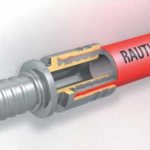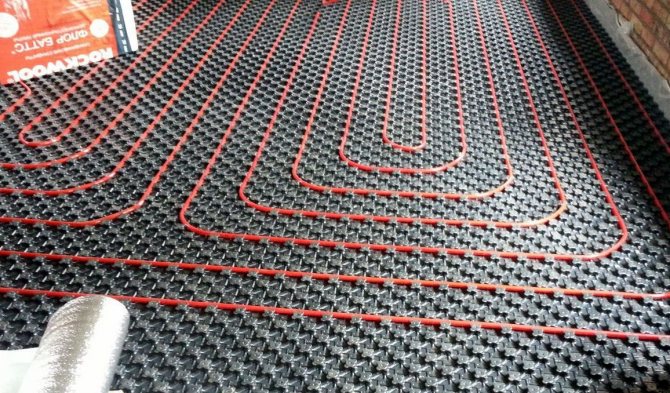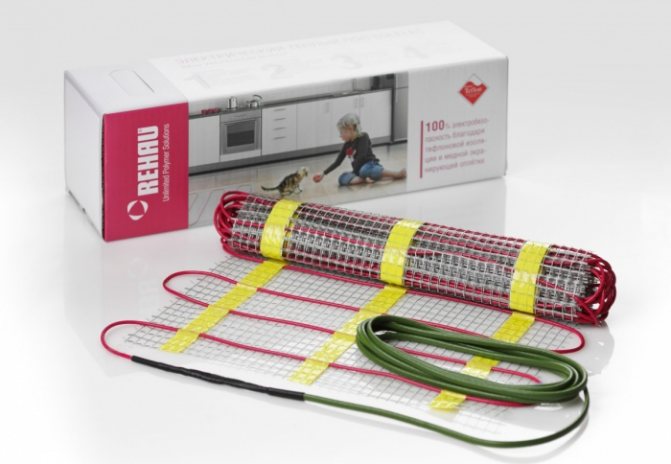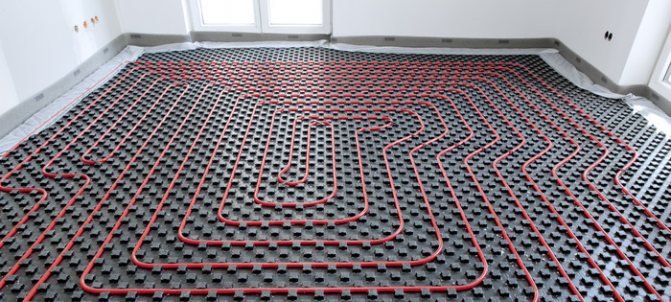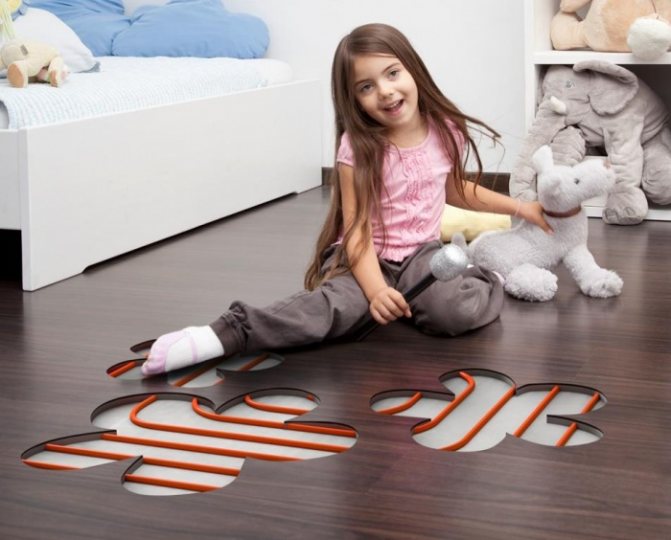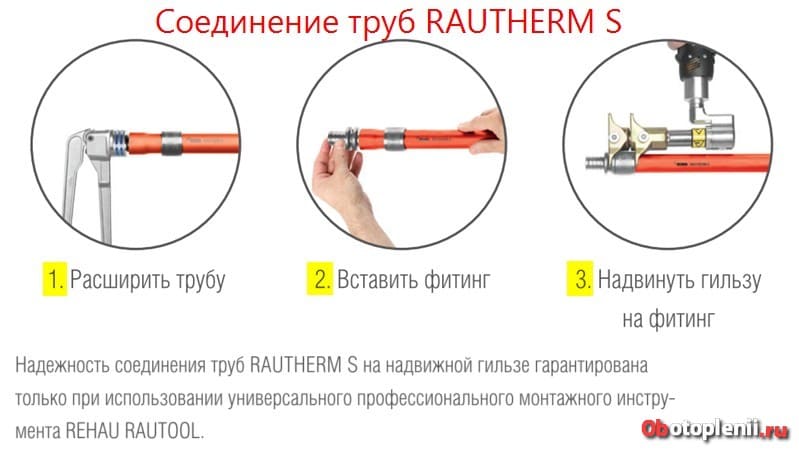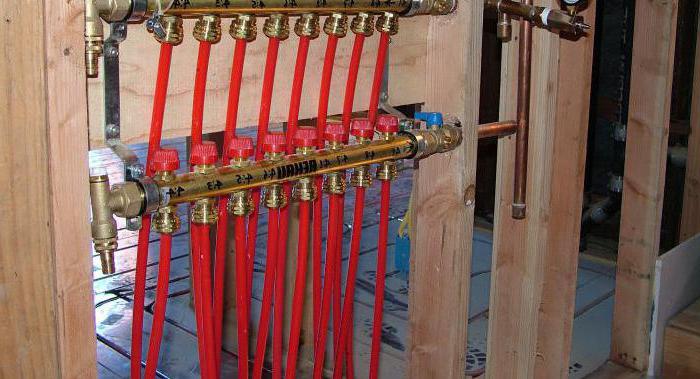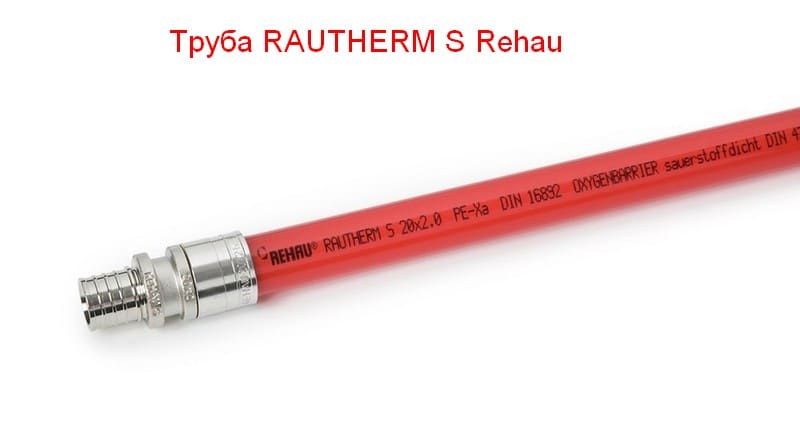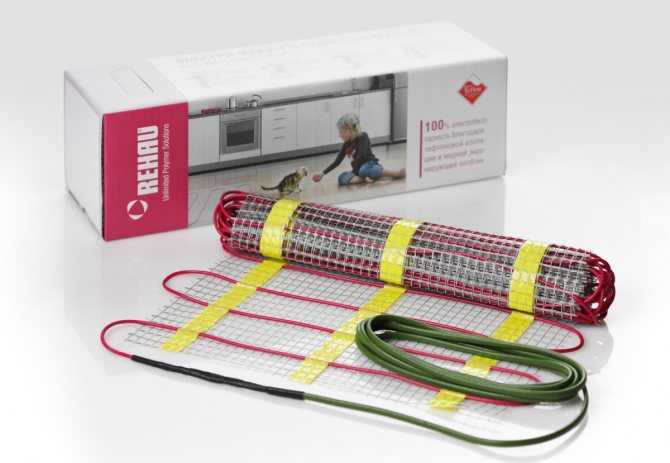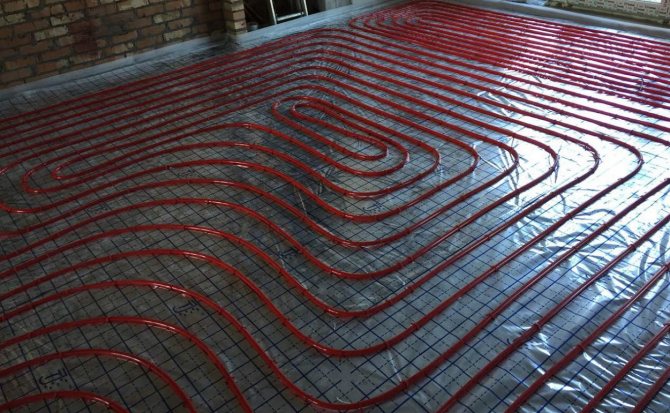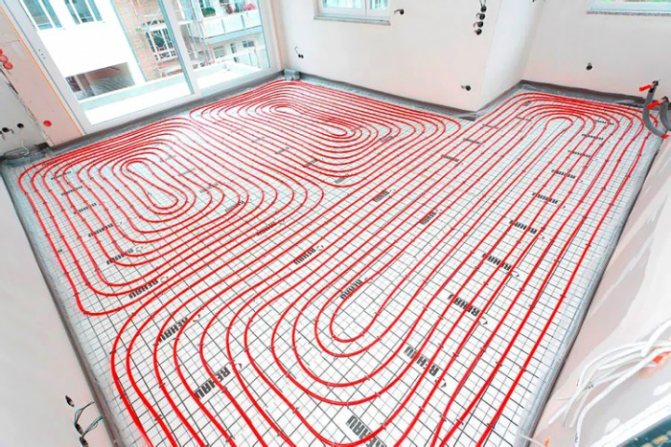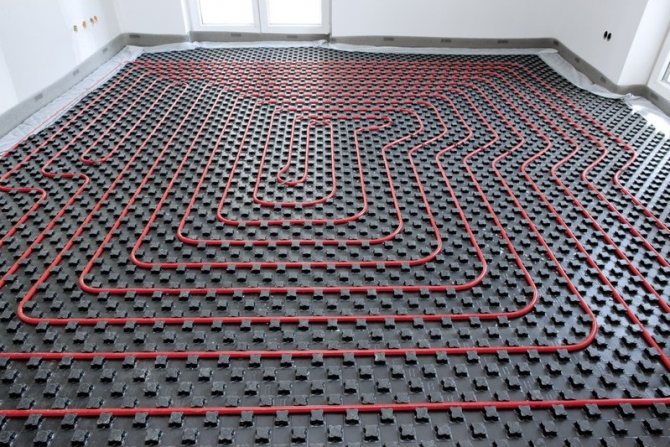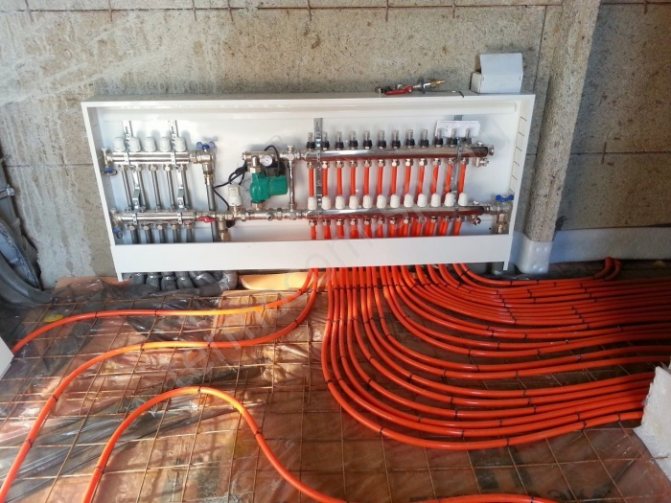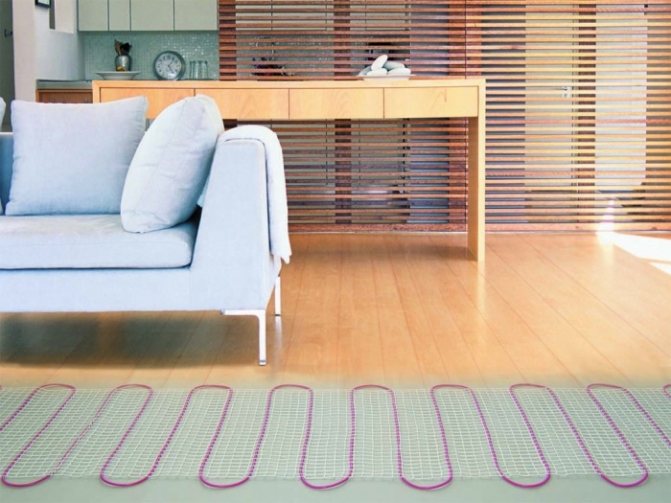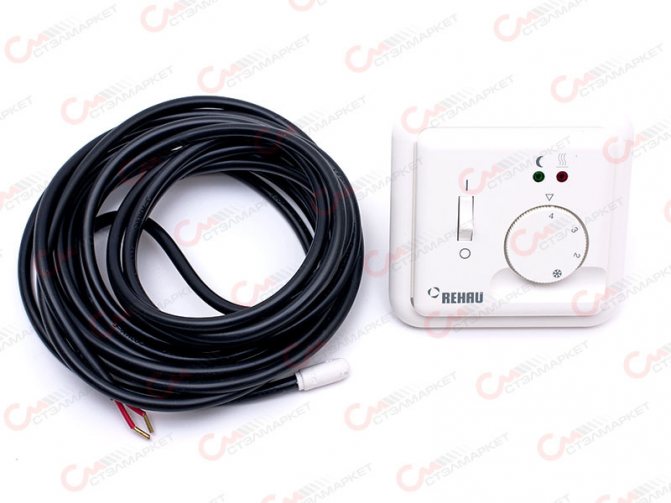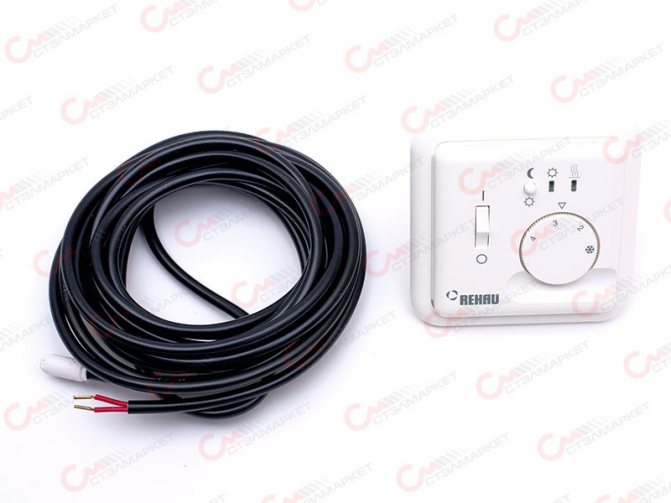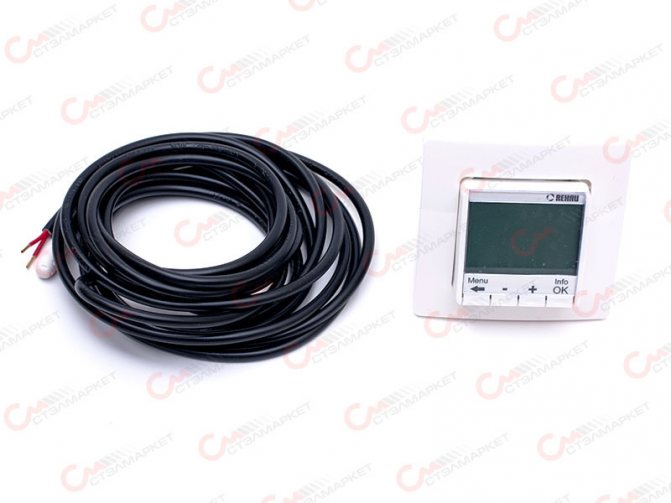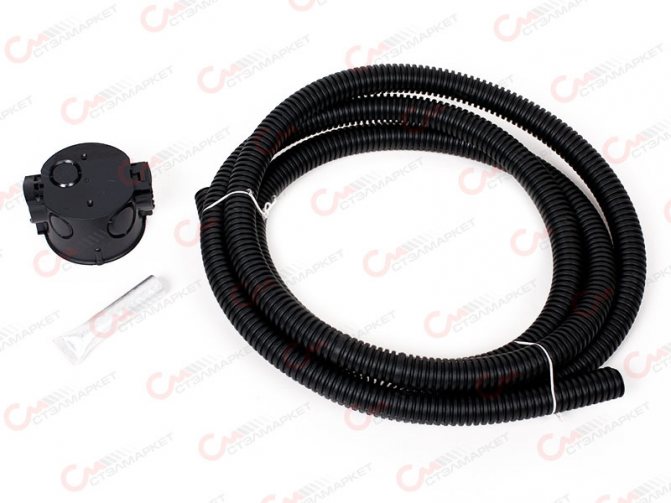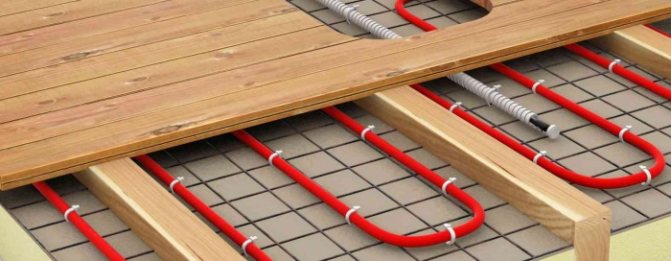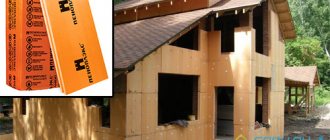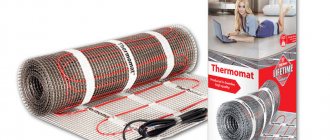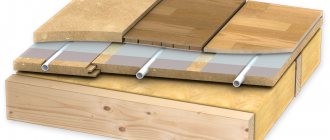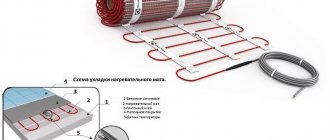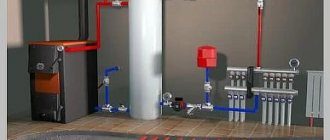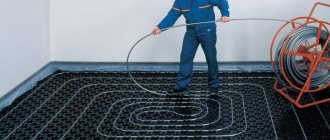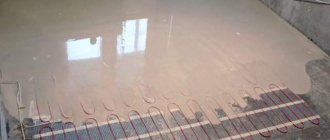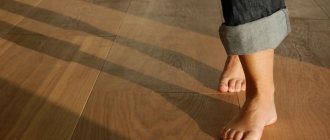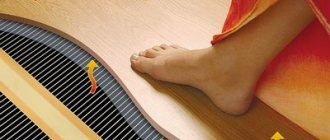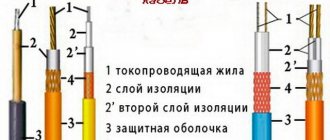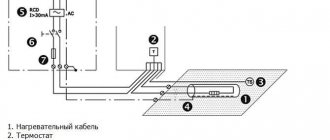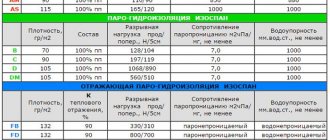About Rehau
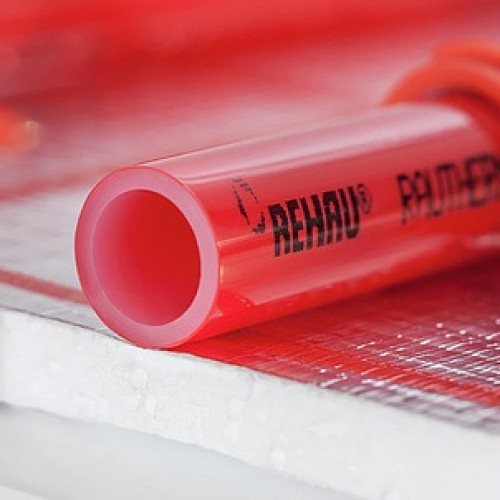
Rehau polyethylene pipes for water underfloor heating
The company was founded in 1948 by Helmut Wagner. The company got its name from the name of the city - Rehau. The staff consisted of only 3 people involved in the manufacture of watering hoses, car parts and soles. However, already in 1951, Wagner opened a second plant for the production of plastic pipes and began to cooperate with the Volkswagen concern.
The turning point in the history of the company was the production of PVC pipes by extrusion, which began in 1958. Since then, Rehau has been rapidly mastering new technologies and expanding production. In 1968 it produces a cross-linked polyethylene pipeline, in 1988 it introduces a technology for connecting pipes using a movable sleeve. In parallel, the company offers innovative solutions for the automotive and aerospace industries. Since 1995, Rehau CFRP has been used in aircraft assembly.
The company released the first warm floor in 1986. For 30 years, the system has reached perfection.
Installing underfloor heating from Rehau reduces installation costs by 50%. Electrical retrofitting thanks to control systems reduces operating costs by 60%.
Rehau pipes
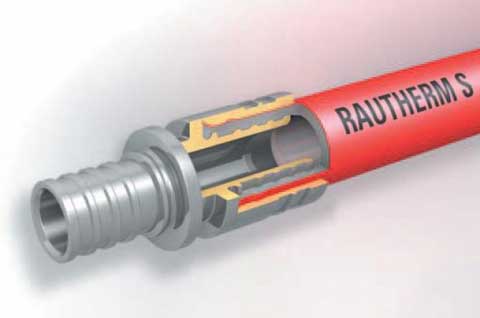

The main link of the heating complex is RAUTHERM pipes. For their manufacture, cross-linked polyethylene of increased strength is used. To maximally block the access of oxygen, an ethylene vinyl alcohol layer is provided in their walls, which performs a protective function.
Separate sections of the pipeline are interconnected by the sleeve method using sliding sleeves, couplings, etc., which are used to complete the pipes for rehau underfloor heating.
Depending on the required power indicators, pipes of various diameters are installed. The range of the company's products includes products with an internal section from 10 to 25 mm.
Let's note some of the advantages of RAUTHERM pipes.
- High mechanical stability.
- Low resistance to heat transfer.
- Flexibility that ensures no kinks at all.
- Resistant to corrosion and degradation.
- Unlike metal pipes, they are not prone to the appearance of internal growths.
- High elasticity allows them to be compressed or squeezed without damaging the system under high mechanical loads, for example, when moving heavy furniture.
- Chemical neutrality. Do not lose performance if copious amounts of alkali or other chemicals are spilled on the floors.
- Resistant to high operating pressures and elevated temperatures.
Types of warm floors
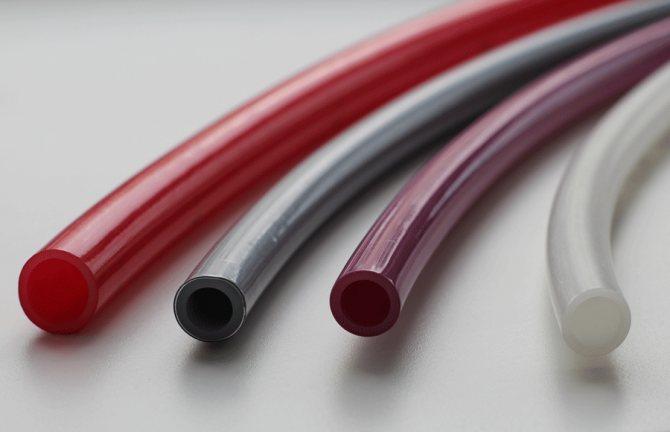

The pipe material does not react with chemicals in the water, therefore no scale deposits on the walls
Rehau offers 2 types of underfloor heaters: electric - Soletec, and water - Rautherm S and Rautitan. Both systems are economical, safe, and have an efficiency close to 100%.
Water
The basis of a water floor is pipes designed for an underfloor heater. Products with a diameter of 10.1 to 32 mm and a wall thickness of 1.1 to 2.9 mm are produced. They have an additional oxygen-protective layer made of cross-linked polyethylene. This technology provides:
- high thermal conductivity - the pipe gives off heat to the floor surface with maximum high efficiency;
- outstanding performance parameters - the heater can withstand heating up to 90 degrees and pressure up to 6 bar;
- resistance to mechanical damage - the tubes are difficult to damage during installation, leakage is excluded;
- flexibility - when laying, they can be bent at any angle;
- no corrosion - cross-linked polyethylene is inert towards any chemically aggressive substances. No salt or clots are deposited on the pipe walls.
The pipes are connected to each other using the movable sleeve technology, which guarantees complete tightness. O-rings are not needed, as they are included in the design of the pipes themselves.
Rehau has developed all the elements of joining and fixing for a water-heated floor: polystyrene mats, film panels, harpoon brackets, RAUFIX tires. The devices reduce the installation time by 4 times.
Electric
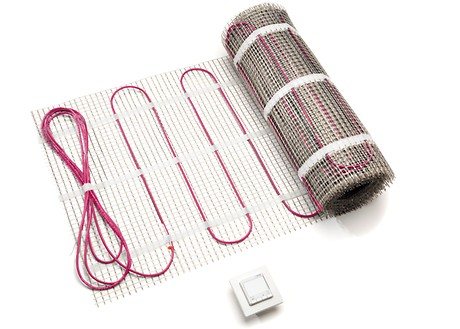

Rehau cable floor does not generate magnetic radiation, can be installed in damp rooms
The Rehau cable floor is devoid of the drawbacks typical of such a system. In the manufacture of a two-core cable, reinforced with Kevlar. It can withstand higher loads and temperatures. Teflon insulation prevents overheating of the elements, and the braided shield protects the user from electromagnetic radiation.
The set includes cables, laying mats, socket boxes, protective tube for the sensor, rotation brackets, corrugated tube. The cable is only 5.5 mm thick and the mat is 3.5 mm thick. The system is laid in a screed or in a layer of tile adhesive directly under the tile. The warm floor practically does not change the height of the room.
The Rehau electric floor does not dry the air, does not create an electromagnetic field, and does not overheat the coating. Installation is allowed in bathrooms, in bathrooms, in kitchens, in children's rooms. Any coating: linoleum, wood, ceramics, laminate, even carpet.
Floor heaters are equipped with digital programmable thermostats and analog ones. The cost of the former is higher, but such a thermostat allows not only to decrease or increase the temperature, but also to form a heating mode, which reduces costs by 15-30%.
If the underfloor heating is the main heater, the screed thickness is less than 35 mm. Concrete accumulates heat: the thicker its layer, the longer the heated floor cools down.
Specifications
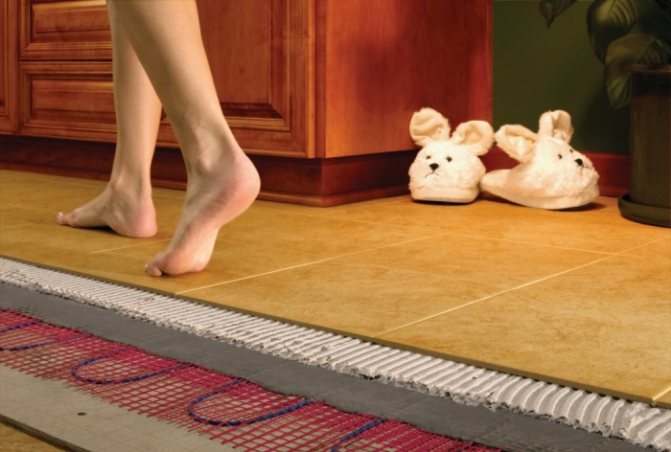

Consider the features and technical characteristics of a two-core heating cable. So, it consists of the following components:
- Heating vein reinforced with Kevlar. This reduces the risk of damage.
- The presence of a polymer mesh that forms the mats.
- Teflon insulation. This insulation prevents possible damage due to overheating of the heating element.
- Copper braided shield. It is necessary in order to completely exclude the formation of electromagnetic waves.
Now we present to your attention the technical characteristics of the heating two-core cable SOLELEC HL TWIN 17W:
- The power of the heating element is 17 W / m.
- The cable has a diameter of 5.5 millimeters.
- The minimum installation height for the electrical cable is 8 mm.
- It is used for laying in the floor screed, in the body of tile adhesive and self-leveling self-leveling floor.
As for the heating mat SOLELEC TM-V 160, it is worth highlighting the following technical characteristics:
- The power of the heating element is 160 W per square meter.
- The diameter of the cable used on the SOLELEC TM-V 160 heating mat is 3.3 mm.
- 5 mm minimum stacking height allowed.
- It is widely used for laying in a floor screed, in a layer of tile adhesive, as well as in a self-leveling layer.
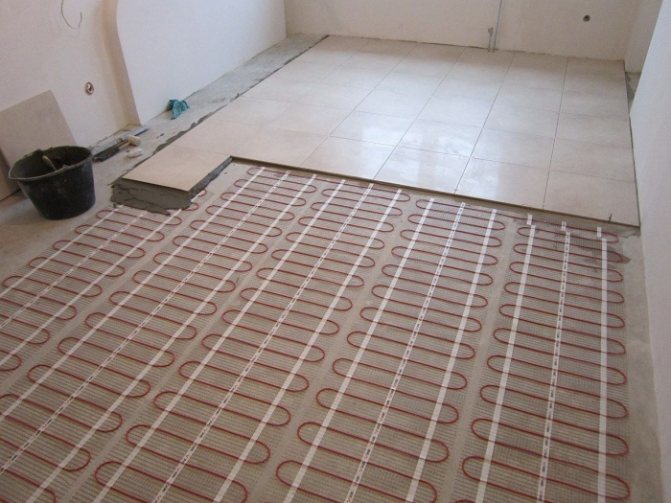

When choosing a particular type of heating element, you should pay attention to the purpose of its use and other features. For example, if you need to install heating over a large area, then give preference to heating mats. So, you will be able to carry out installation work much faster. If the floor area is small, then you can do with a two-core heating cable. Its installation is carried out on a special strip, which is pre-attached to the base of the floor.
Important! Before making an electric underfloor heating, be sure to level the floor screed. The base must not be damaged in any way.
Advantages and disadvantages of Rehau underfloor heating systems
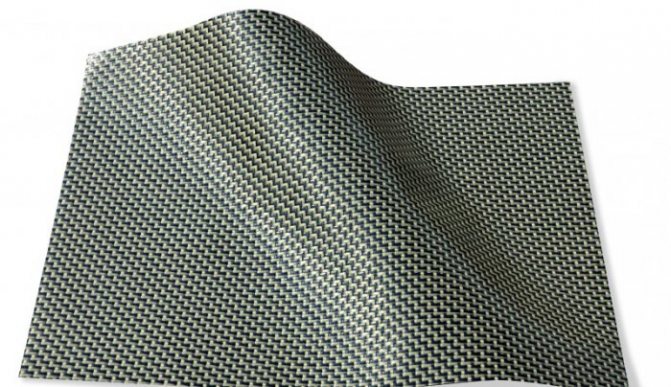

Durable material - Kevlar, which covers the Rehau electrical cable
Any floor heating option has the following advantages:
- Reliability - the cable is reinforced with Kevlar and the water pipes are protected by a XLPE sheath. Both heating elements withstand high loads and heating with a large margin - + 90 and +95 C at operating +60 C.
- Overheating and destruction are excluded. Insulation and cross-linked polyethylene prevent mechanical damage;
- Flexible tubes and cables are laid according to different schemes and achieve uniform heating of the entire area.
- No contamination - there is no excess air circulation when the surface is evenly heated. Dust and dirt do not move around the room.
Rehau underfloor heating can be installed in apartments where allergy sufferers live.
There are also disadvantages:
- Installation of the system is technically simple, since the kit includes all the necessary elements for installation. However, wiring diagrams and calculations are far from simple and require experience.
- Screed laying is a complicated and messy process. But here the point is not in the floor heater, but in the screed itself.
- Installation is carried out on a prepared floor.
Repairing an underfloor heater is difficult. To remove the damaged fragment, you need to remove the finishing coat, remove the screed or adhesive layer and replace the pipes or cables. This rarely happens: the manufacturer does not in vain give a guarantee for heating elements for a period of 10 years.
Electric floors
Rehau underfloor heating is produced in the form of an electric floor model called Rehau Solelec. The manufacturer uses mats with two-core cables as the basis for the flooring material. The underfloor heating installation kit should include the mats themselves, a thermostat and a sensor, as well as installation elements.
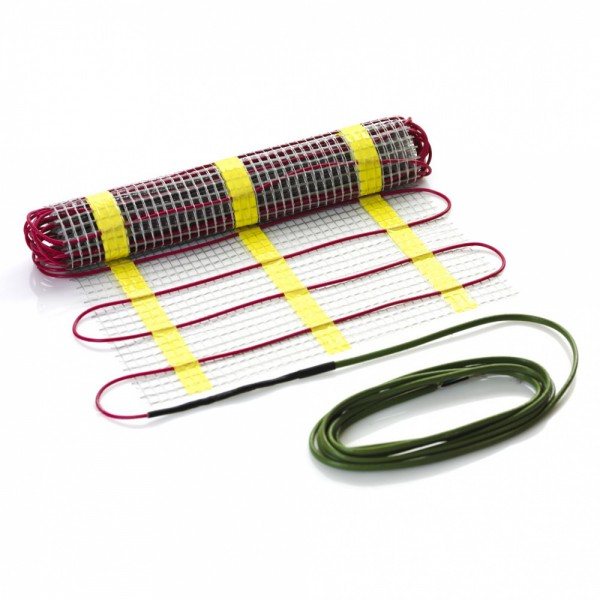

The rehau electric floor warms up longer than the water one, the approximate warm-up time is about two hours. When using such a floor as a heating system, your electricity bills will increase dramatically. But even taking into account this minus, electric rehau coatings are used in apartments quite often, since they practically do not affect the floor height. The thickness of the mat with heating elements is so small that in rooms with low ceilings, the Rehau electric floor is the only option for organizing an underfloor heating system.
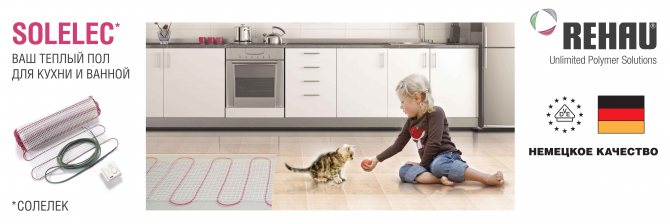

How to install a rehau underfloor heating? It is recommended to start work by checking the functionality of the purchased material. You can check the operation of the heating cable using a tester, the possible deviation from the declared indicators should not exceed 7%. After that, as with the installation of a water floor, it is necessary to design the layout of the coating and the location of the thermostat and sensor.


Then you need to clean the work surface from dust and debris, and also prepare the mat with the cable for laying. It is necessary to work with the mat strictly according to the instructions: it can be turned and even cut. When cutting, proceed very carefully, since only the mesh is allowed to be cut. If you cut the heating cable itself, your floor will not function.
When the base and mat are prepared, it is necessary to place the temperature sensor in the marked place. The electric mat can then be spread. How is the canvas attached to the base? You can place the mat in tile adhesive or install Rehau underfloor heating on a concrete screed. Both options involve the use of tile adhesive.
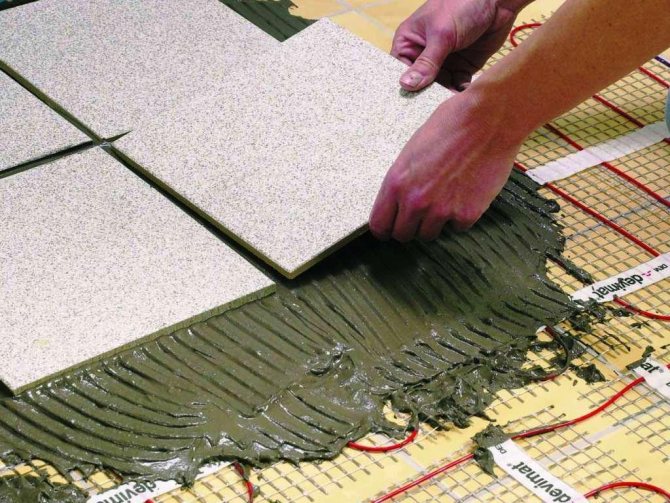

In the first method, the adhesive is applied to the base with a spatula, then the heating mat is laid down on it with a cable downward. From above, the mat is again covered with a layer of tile adhesive.In the second method, the mat is laid out on the cement screed with the adhesive side down. On top of it, glue is applied and the tile itself is laid. When using the second method of installing an electric floor, experts recommend controlling the application of a layer of glue: it should hide the cable. In parts of the coating where the cable is not completely covered with adhesive, it can overheat.
The assembled underfloor heating system should be connected to the thermostat and left to dry completely. It is impossible to dry the floor by turning on the heating mats, the glue must dry itself. Such interference in the drying process of the warm floor can lead to damage to the structure.
Installation and assembly of underfloor heating
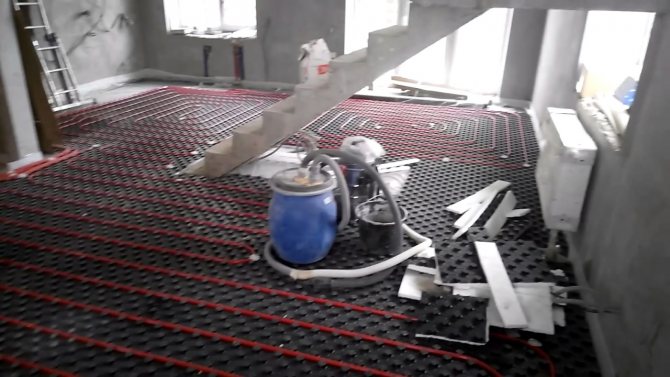

Installation of underfloor heating in cellular polystyrene plates Rehau Varionova
The electric floor is laid in several stages. All requirements of the instructions must be strictly followed.
- Calculate the area of the future heater. Pipes are laid only on a free area, since it makes no sense to heat the floor under the furniture.
- Choose a styling scheme: snail, snake, double snake. The laying step is calculated. In central Russia, the optimal distance between the loops is 11–18 cm. The total length of the contour is taken into account - no more than 120 meters, even with the largest diameter of 32 mm.
- The subfloor is leveled, a damper tape or profile is laid to compensate for the expansion that is inevitable when the pipe heats up.
- The base floor is insulated with a layer of expanded polystyrene, protected from moisture with a plastic wrap. If you install mats, no additional insulation is needed.
- Install a distribution manifold and connect it to the boiler.
- Mats or panels are placed, and flexible tubes are laid on them according to the scheme. Each tube is connected to a manifold. The heating elements are fixed with special fasteners.
- The warm floor is checked for operability: it is connected to a pump that maintains a pressure of 4–5 bar for 24 hours.
- If there are no leaks, the floor warms up evenly, it is poured with a cement-sand screed and reinforced.
- After hardening (28 days), a finishing coat is applied.
Installation of a water floor takes longer and requires more costs than installing an electric floor, but its work is cheaper.
Rehau water underfloor heating
Fully ready-to-install heating systems are available to the buyer. Systems are completed:
- Rehau underfloor heating pipes - made of cross-linked polyethylene using proprietary technology. The slide-on sleeve makes installation quick and easy. Due to this type of connection, it became possible to quickly and reliably connect the pipeline parts, and this, in turn, influenced the absence of the need to use large pipeline bays. Rehau pipe diameter from 17 to 32 mm. For comfortable use, the kit includes a variety of fittings and fasteners. The red polyethylene pipe is the hallmark of this German brand.
- Rehau expanded polystyrene mats for a water-heated floor. The buyer is offered a substrate for installing pipes of various designs: smooth and with Varionova clamps. There are also mats that allow installation on a grid using harpoon brackets or RAUFIX tires. Installation of such a water floor can be carried out independently, since there is nothing complicated in the work itself, the fastenings are thought out.
- Rehau collector for underfloor heating is made of stainless steel. The structure is fastened using galvanized brackets, which provide high sound insulation. The manifold includes control valves, some models have flow meters. The device of the comb is such that you can connect from 2 to 12 circuits. The operating principle of the German distributor manifold is based on a three-way, servo-driven mixing unit.
- Automation unit that controls the water floor, sensors and regulators.The pump-mixing unit, equipped with a servo drive, operates entirely in automatic mode and precisely regulates the heating of the liquid. Temperature sensors are mounted between the pipe coils in a special corrugation, and this makes it possible, if necessary, to replace a broken device without disassembling the floor covering. The temperature regulation system can be controlled by mechanical and programmable devices. A distinctive advantageous feature of the units is the ability to control the thermostat using a remote control or the Internet.
- Various components and accessories. Buying a system of underfloor heating water, no additional purchase of control and shut-off valves from other manufacturers is required. The consumer has access to both all the necessary fittings and plasticizers for the Rehau brand screed.
The manufacturer can guarantee the correct operation of the mixing unit and the manifold only if the system is installed using components of the same brand.
Calculator for calculating the footage of a pipe for a warm water floor.
The choice of mats for underfloor heating
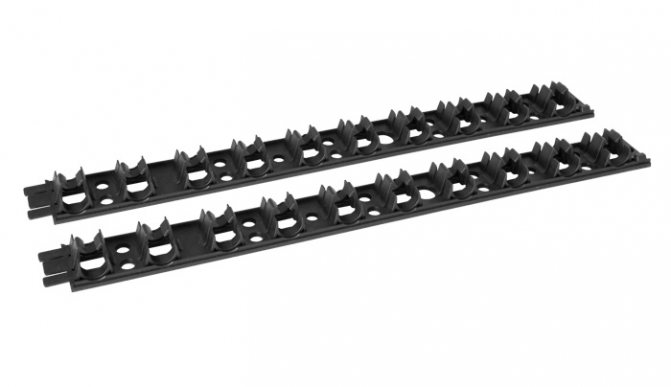

Rehau brand fixing rail for underfloor heating pipes
There are 3 types of backing:
- Mats for warm water floors Rehau Varionova are made of expanded polystyrene. This model replaces the thermal insulation layer, as the material retains heat well. The surface is embossed, includes clamps of complex shape. The tubes are placed between the clamps.
- Varionova panels are a shaped polystyrene foam backing with square or cylindrical bosses. Heating pipes are placed between the protrusions. The panel also traps heat and dampens sound.
- RAUFIX tires are rigid polypropylene backing. On the underside there are sharp staples so that the tire can be fixed to any surface. Does not possess thermal insulation properties.
The company also produces clips and harpoon clips for fixing heating elements.
If a warm floor is laid in a room above an unheated cellar, you cannot do without thermal insulation.
Pros and cons of the system
How customers say about this system, it has only one drawback - it is a high price, which is imperceptible against the background of the advantages of Rehau underfloor heating:
- It is easy and quick to assemble.
- Underfloor heating is economical and allows consumers to save up to 6% per year on energy costs. It can be connected to heat pumps or solar collectors.
- All components of the system are completely environmentally friendly and do not emit harmful substances into the atmosphere when heated.
- Heat in all rooms can be controlled remotely.
Warm water floors from Rehau are distinguished not only by the quality and ease of installation, but also by their beauty combined with high efficiency.
Operation of underfloor heating Rehau
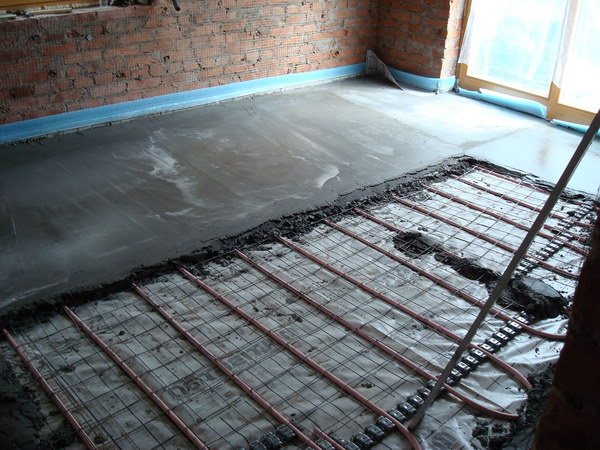

Before laying in a screed, the warm floor is pressed under pressure
Recommendations for the use of warm floors are simple:
- It is impossible to sharply increase the temperature, and even more so the water supply. You also need to ensure that children do not gain access to the control device.
- Inspection and repair of the structure is performed by a specialist. Independent actions are prohibited.
The entire system is buried in the floor and is practically inaccessible. She is not afraid of puddles in the bathroom, frost on the balcony, the weight of the dishwasher in the kitchen.
Fasteners
For fastening the pipeline transporting the coolant, fastening systems are used. There are several such products.
Fixing mats Varionova
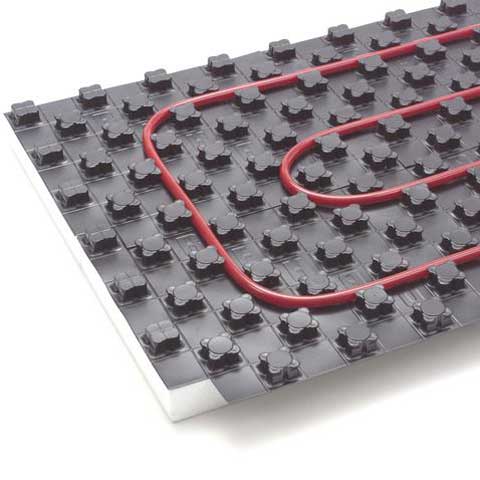

The rigid polymer material from which they are made provides the mats with excellent mechanical stability. For example, they are able to withstand the weight of an adult man, even if the top layer of the screed has not yet been poured. It is they who provide a high speed of installation of Rehau floors in comparison with models from other manufacturers. Each product is equipped with clips for installation over pipes.The mats can be cut along special lines into separate pieces. They are then joined using connecting elements. Pipes ø 14–17 mm are laid with a minimum pitch of 5 cm.
Specifications:
- The thickness of the coating is 2 mm, it is possible to choose products with or without a heat-insulating foam backing.
- Designed for laying pipelines with a diameter of 14 to 17 mm.
- The minimum installation step is 5 cm.
- To optimize the installation on the surface of the mats, there are cutting lines and connecting elements for joining the individual parts to each other.
RAUFIX tires
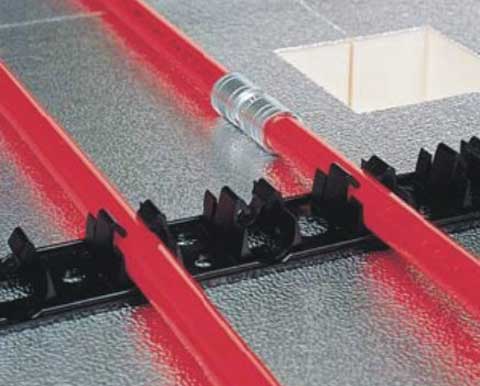

This is the best way to install inexpensive underfloor heating. Tires made of rigid polypropylene, thanks to the special brackets on the underside, are attached to almost any base. Such products have a small thickness, due to which the floor height increases by only 5 mm. The installation of the line is carried out in increments of 5 cm. Tires are 1 meter long and 4 or 5 cm wide. Tires must be fixed over a layer of thermal insulation.

